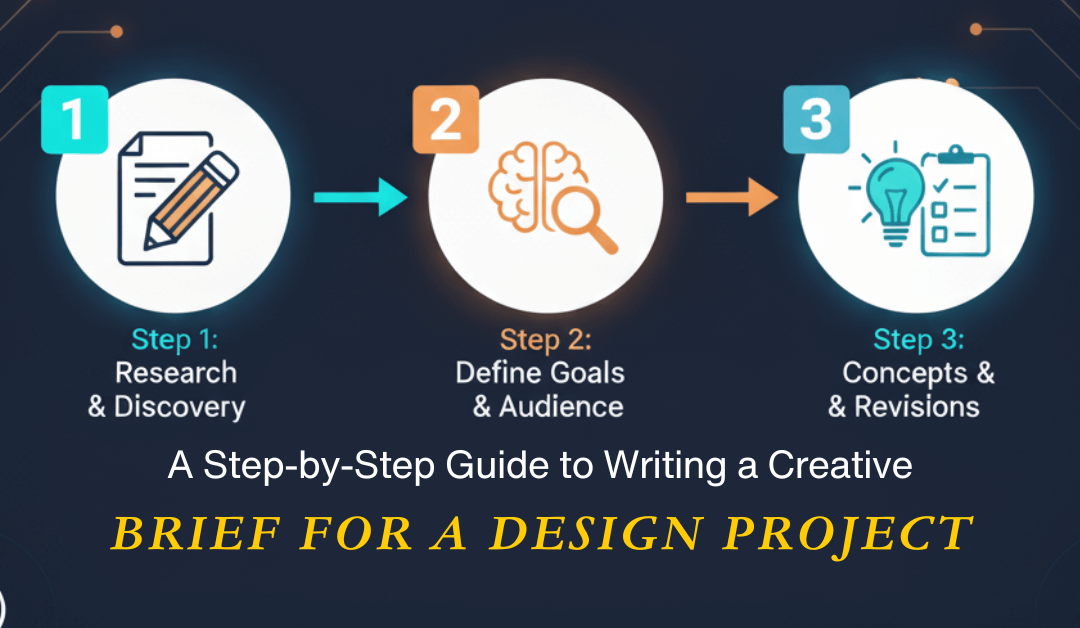Every successful design project, whether for a new logo or a full website redesign, begins with one crucial document: the creative brief.
A well-written creative brief is the North Star for your project. It aligns the client and the design team on the goals, scope, and expectations, eliminating guesswork and minimizing frustrating revisions. Think of it as a blueprint for creative success.
Step 1: Start with the Background and Objective
Provide context. Why is this project happening now?
Project Background: Briefly describe your company and the current situation.
The Objective: This is the most important part. What is the single, primary goal? The objective should be clear, concise, and measurable.
Bad Example: “We need a new brochure.”
Good Example: “We need a new promotional brochure to increase event sign-ups by 15% among our existing customer base.”
Step 2: Define the Target Audience
Who are you trying to communicate with? Be as specific as possible. Include details like:
- Age, gender, location, and income level
- Their values, interests, and pain points
- Their relationship with your brand
Step 3: Outline the Key Message
If your audience could only remember one thing, what would it be? This is your core message.
Example (for a new organic food brand): “Healthy eating can be delicious and convenient.”
Step 4: Describe the Tone and Feeling
How should the design feel? Use descriptive adjectives. Is it playful, professional, luxurious, minimalist, energetic, or trustworthy?
Pro Tip: It’s often just as helpful to include what you don’t want. For example, “We want to look modern and innovative, but not cold or unapproachable.”
Step 5: Detail the Deliverables and Mandatories
Deliverables: List exactly what you need. For example, “A new logo in vector format (AI, EPS), plus PNG and JPG versions.”
Mandatories: What absolutely must be included? This could be your company logo, a specific tagline, or a web address.
Step 6: Set the Budget and Timeline
Be transparent about the budget and provide a realistic timeline with key milestones and a final deadline.
Who Should Be Involved in Writing the Brief?
Creating a brief shouldn’t happen in a vacuum. It should be a collaborative effort between the key stakeholders on the client side (e.g., the marketing manager, the CEO) and, if possible, the lead designer or project manager. This collaboration ensures everyone is aligned from the very start, preventing misinterpretations later on.
The Bottom Line
A creative brief is more than just a project formality; it’s a strategic tool. Investing an hour or two to write a thorough, thoughtful brief is the single best way to ensure your design project runs smoothly, stays on budget, and achieves its goals. It replaces assumptions with clarity and transforms a subjective creative process into a strategic, objective-driven collaboration. It’s the foundation upon which great design is built.
Need help translating your vision into a clear brief for your next design project? We can guide you through the process. Let’s talk.

